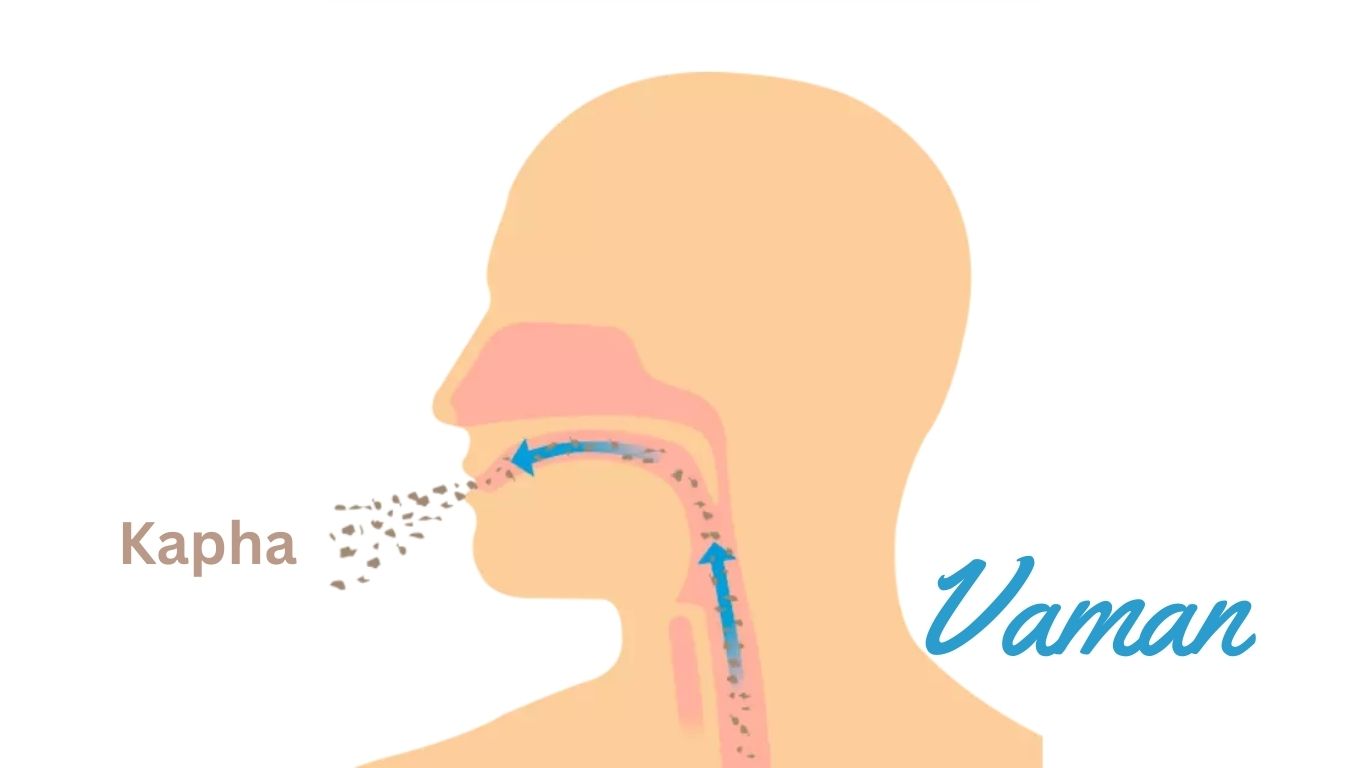Panchakarma: 5 Powerful Methods for Detoxification and Healing

Introduction
In today’s fast-paced and stressful world, it is essential to take care of our physical and mental well-being. One effective way to achieve this is through Panchakarma, an ancient Ayurvedic practice that focuses on detoxification and rejuvenation. Panchakarma offers a holistic approach to healing and has gained immense popularity worldwide. In this article, we will explore the five powerful methods that can help detoxify your body and promote overall wellness.
1. Vamana: Cleansing through Therapeutic Vomiting
Vamana is the first technique in Panchakarma and involves the controlled induction of therapeutic vomiting. This process aims to eliminate excess Kapha dosha, which is responsible for conditions like congestion, asthma, and allergies. Vamana helps remove toxins from the upper respiratory tract and digestive system, promoting better respiratory health and digestion.
During Vamana, the individual is given specific herbs and substances to induce vomiting. This process is carefully supervised by trained practitioners to ensure safety and effectiveness. Vamana not only detoxifies the body but also enhances metabolism, improves skin complexion, and provides mental clarity.

2. Virechana: Purification through Therapeutic Purgation
Virechana, the second step of Panchakarma, involves the cleansing of the gastrointestinal tract through the process of therapeutic purgation. By administering herbal laxatives and purgatives, Virechana helps to eliminate accumulated toxins from the gastrointestinal tract, liver, gallbladder, waste materials, and excess Pitta (one of the three doshas in Ayurveda).
This process effectively treats conditions such as liver disorders, skin diseases, and digestive ailments. Virechana not only detoxifies the body but also improves digestion, enhances metabolism, and promotes overall vitality.

3. Basti: Enema Therapy for Deep Cleansing
Basti, often referred to as Ayurvedic enema therapy, is the third step of Panchakarma. This highly specialized treatment involves the introduction of medicated herbal oils and decoctions into the rectum, which helps eliminate toxins from the colon and balances the Vata dosha, which is responsible for disorders related to the nervous system, musculoskeletal system, and reproductive system.
Basti is particularly beneficial for individuals suffering from chronic constipation, irritable bowel syndrome (IBS), arthritis, infertility and various neurological disorders. It rejuvenates the colon, improves absorption, and restores the body’s natural balance.

4. Nasya: Nasal Administration for Sinus and Respiratory Health
Nasya, the fourth step of Panchakarma, involves the administration of herbal oils, powders, or medicated fluids through the nostrils. This practice cleanses the nasal passages, sinuses, and respiratory system, effectively removing accumulated toxins and promoting optimal respiratory health.
Nasya therapy is especially helpful for individuals experiencing sinusitis, allergies, migraines, and nasal congestion. It improves the overall functioning of the respiratory system and enhances mental clarity.

5. Raktamokshana: Bloodletting Therapy for Detoxification
Raktamokshana, the final step of Panchakarma, focuses on blood purification and detoxification. This therapy involves the controlled removal of a small amount of blood from specific sites on the body, utilizing techniques such as leeching or venipuncture. Raktamokshana effectively eliminates toxins, balances Pitta, and improves circulation.
It is beneficial for individuals with chronic skin disorders, hypertension, and certain musculoskeletal conditions. This therapy not only purifies the blood but also enhances the body’s immune response and overall vitality.

The Significance of Panchakarma in Modern Life
Restoring Balance in the Body
Panchakarma works on the principle of balancing the three doshas—Vata, Pitta, and Kapha—which are fundamental energies governing our physical and mental well-being. When these doshas are in harmony, we experience optimal health. However, due to various factors, such as poor diet, environmental toxins, and emotional stress, the doshas can become imbalanced, leading to a range of health issues.
The five methods of Panchakarma target specific doshas and help restore their equilibrium. Vamana and Virechana tackle excess Kapha and Pitta doshas, respectively, while Basti focuses on balancing Vata dosha. Nasya works on clearing Kapha congestion in the head, and Rakta Mokshana addresses impurities in the blood. By addressing these imbalances, Panchakarma supports the body’s innate healing capacity and enhances overall well-being.

Detoxification and Cleansing
Toxins accumulate in our bodies through various channels, including improper digestion, environmental pollutants, and emotional stress. These toxins, known as ama in Ayurveda, can hinder the body’s natural processes and contribute to the development of diseases. Panchakarma offers a comprehensive detoxification process to eliminate ama and cleanse the body at a deep level.
Each method of Panchakarma targets specific organs or systems to remove toxins and restore their optimal functioning. Vamana detoxifies the upper respiratory and digestive systems, Virechana cleanses the digestive tract, and Basti nourishes and purifies the colon. Nasya clears the nasal passages, while Rakta Mokshana eliminates impurities from the blood. By undergoing Panchakarma, you can effectively eliminate accumulated toxins, paving the way for improved health and vitality.
Rejuvenation and Vitality
Panchakarma is not just about detoxification; it is also a rejuvenating therapy that replenishes and revitalizes the body and mind. The holistic nature of Panchakarma treatments ensures that not only are toxins eliminated, but the body’s natural healing mechanisms are activated.
During the Panchakarma process, the body experiences deep relaxation, allowing it to heal and repair on a cellular level. The therapies nourish the tissues, balance the doshas, and promote the efficient functioning of the organs. This results in increased energy levels, mental clarity, and a radiant complexion. Panchakarma also supports healthy aging, as it helps slow down the degenerative processes in the body and promotes longevity.

Individualized Approach to Wellness
One of the key strengths of Panchakarma is its personalized approach to wellness. Ayurvedic practitioners assess each individual’s unique constitution, imbalances, and health concerns before recommending specific Panchakarma treatments. This ensures that the therapies are tailored to meet the individual’s needs, allowing for a truly transformative experience.
By addressing the root cause of health issues and focusing on rebalancing the doshas, Panchakarma offers a comprehensive and individualized approach to well-being. The treatments are performed under the guidance of trained professionals who monitor your progress, making adjustments as needed. This personalized approach ensures that you receive the maximum benefits from Panchakarma and sets it apart from generic detox programs.
Embracing Panchakarma for Optimal Health
In a world where quick fixes and temporary solutions abound, Panchakarma stands out as a time-tested and holistic approach to wellness. By incorporating these powerful methods into your lifestyle, you can achieve a state of balance, detoxify your body, and experience rejuvenation at a deep level.
If you are considering Panchakarma, seek out a qualified Ayurvedic practitioner who can guide you through the process. Remember, Panchakarma is not just a one-time treatment but a journey towards sustainable well-being. Embrace the wisdom of Panchakarma, and let it be your companion on the path to optimal health and vitality.
Remember, prioritize your health and well-being, and let the power of Panchakarma guide you towards a balanced and vibrant life.
The Rising Popularity of Panchakarma

In recent years, Panchakarma has gained significant popularity across the globe as people seek natural and holistic approaches to wellness. The effectiveness of these therapies in addressing the root cause of various health conditions has contributed to its growing reputation. Panchakarma is not only limited to the treatment of specific ailments but also serves as a preventive measure to maintain overall well-being.
Embracing the Holistic Approach
One of the key reasons behind the increasing interest in Panchakarma is its holistic approach to healing. Unlike conventional medicine, which often focuses solely on the symptoms, Panchakarma emphasizes restoring the balance of the three doshas (Vata, Pitta, and Kapha) and cleansing the body at a deep level. By addressing the root cause and promoting overall harmony, Panchakarma aims to provide long-lasting results and support the body’s inherent healing abilities.
Tailored Treatments for Individual Needs
Another noteworthy aspect of Panchakarma is its personalized approach to treatment. Ayurvedic practitioners carefully assess an individual’s unique constitution, doshic imbalance, and specific health concerns before designing a customized Panchakarma program. This personalized approach ensures that each therapy is tailored to meet the individual’s needs, maximizing the effectiveness of the treatment and promoting optimal results.
A Journey of Detoxification and Rejuvenation
Panchakarma is often regarded as a transformative journey that extends beyond physical detoxification. These therapies not only cleanse the body but also have a profound impact on mental and emotional well-being. Many individuals who undergo Panchakarma report a sense of rejuvenation, improved clarity of mind, reduced stress levels, and an overall uplifted sense of being.
Supporting Long-Term Health Goals
In addition to detoxification and rejuvenation, Panchakarma plays a vital role in supporting long-term health goals. The therapies aim to strengthen the body’s immune system, improve digestion, enhance metabolism, and restore vitality. By addressing imbalances at the root level, it helps individuals maintain their health and prevent the recurrence of ailments, allowing them to lead a vibrant and balanced life.
The Importance of Choosing a Qualified Practitioner

To fully experience the benefits of Panchakarma, it is crucial to consult a qualified Ayurvedic practitioner. Panchakarma therapies involve specialized techniques, herbal preparations, and precise guidance throughout the treatment process. An experienced practitioner will ensure that the therapies are administered safely and effectively, considering factors such as the individual’s health condition, body constitution, and suitability for specific treatments.
When selecting a practitioner, look for someone who has undergone extensive training in Ayurveda and specializes in Panchakarma. Verify their credentials, experience, and knowledge of Ayurvedic principles. Additionally, consider seeking recommendations or reading reviews from previous clients to gauge their expertise and professionalism.
Embrace the Transformative Power of Panchakarma
In conclusion, Panchakarma offers a holistic approach to detoxification and healing. The five powerful methods—Vamana, Virechana, Basti, Nasya, and Rakta Mokshana—work synergistically to cleanse the body, balance the doshas, and promote overall well-being. These ancient techniques have stood the test of time and continue to provide numerous benefits in the modern world.
If you’re seeking a transformative experience that goes beyond conventional detoxification, Panchakarma may be the answer. Consult with a qualified Ayurvedic practitioner to determine the most suitable Panchakarma treatments for your unique needs and embark on a journey of rejuvenation and optimal health.

Very Informative
Good info